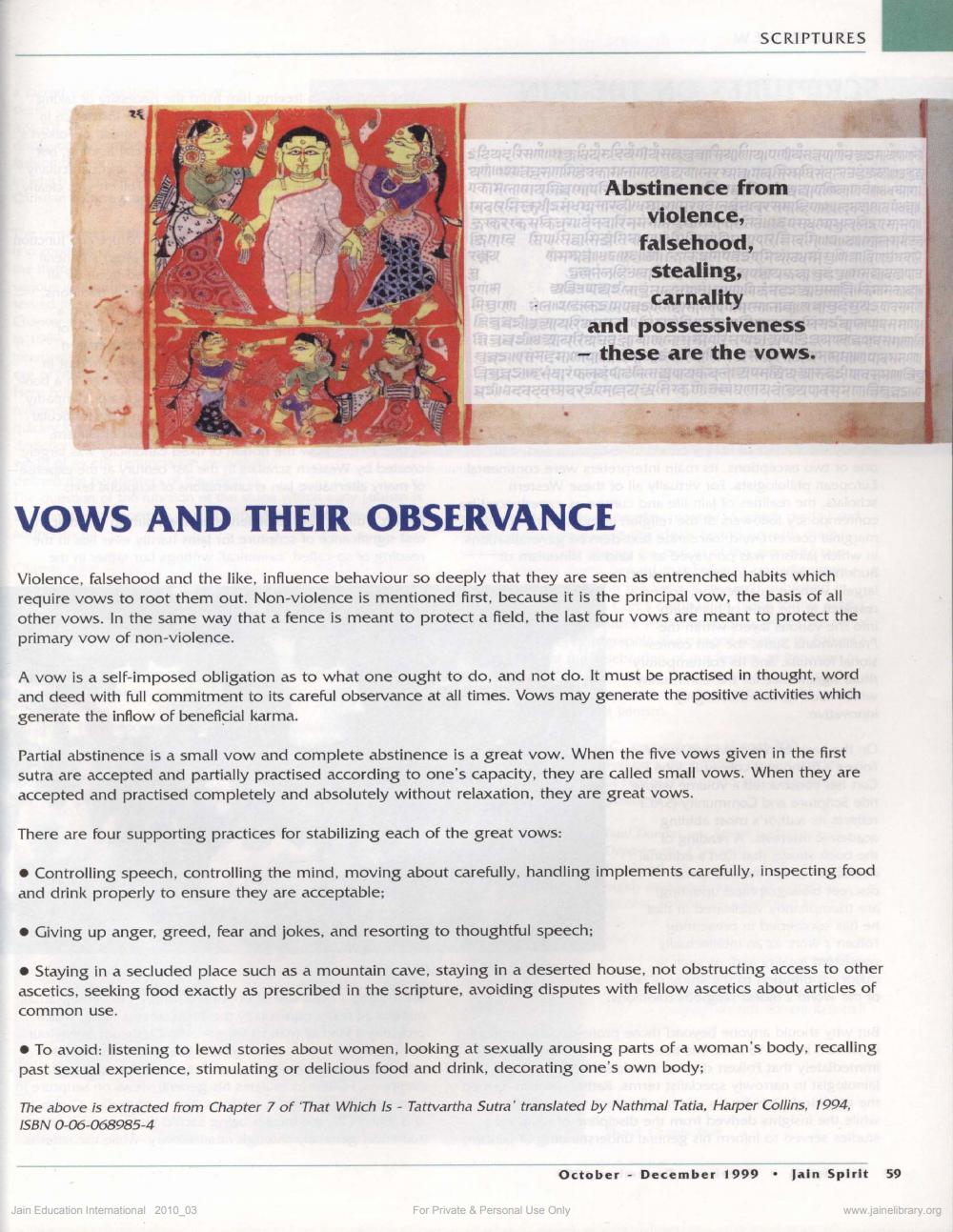________________
SCRIPTURES
zeleninama थयोतवसामियकामालागा na
Abstinence from एमवलमधीजमध्यासारखा
violence, a Emel ala falsehood,
ਪਰਮਵੀਰ अल नदिstealing,शायड
ਰਾਗ ਬੜੀ EESH Barnality UER carnality
2 बिबीपव्यायरि and possessivenessसया
Esata
SISE- these are the vows. विडजजामसवारेफलहेगानिर
G
VOWS AND THEIR OBSERVANCE
Violence, falsehood and the like, influence behaviour so deeply that they are seen as entrenched habits which require vows to root them out. Non-violence is mentioned first, because it is the principal vow, the basis of all other vows. In the same way that a fence is meant to protect a field, the last four vows are meant to protect the primary vow of non-violence.
A vow is a self-imposed obligation as to what one ought to do, and not do. It must be practised in thought, word and deed with full commitment to its careful observance at all times. Vows may generate the positive activities which generate the inflow of beneficial karma.
Partial abstinence is a small vow and complete abstinence is a great vow. When the five vows given in the first sutra are accepted and partially practised according to one's capacity, they are called small vows. When they are accepted and practised completely and absolutely without relaxation, they are great vows.
There are four supporting practices for stabilizing each of the great vows:
• Controlling speech, controlling the mind, moving about carefully, handling implements carefully, inspecting food and drink properly to ensure they are acceptable;
• Giving up anger, greed, fear and jokes, and resorting to thoughtful speech;
• Staying in a secluded place such as a mountain cave, staying in a deserted house, not obstructing access to other ascetics, seeking food exactly as prescribed in the scripture, avoiding disputes with fellow ascetics about articles of common use.
• To avoid: listening to lewd stories about women, looking at sexually arousing parts of a woman's body, recalling past sexual experience, stimulating or delicious food and drink, decorating one's own body:
The above is extracted from Chapter 7 of 'That Which Is - Tattvartha Sutra' translated by Nathmal Tatia, Harper Collins, 1994, ISBN 0-06-068985-4
October - December 1999 • Jain Spirit 59
Jain Education Intemational 2010_03
For Private & Personal Use Only
www.jainelibrary.org




